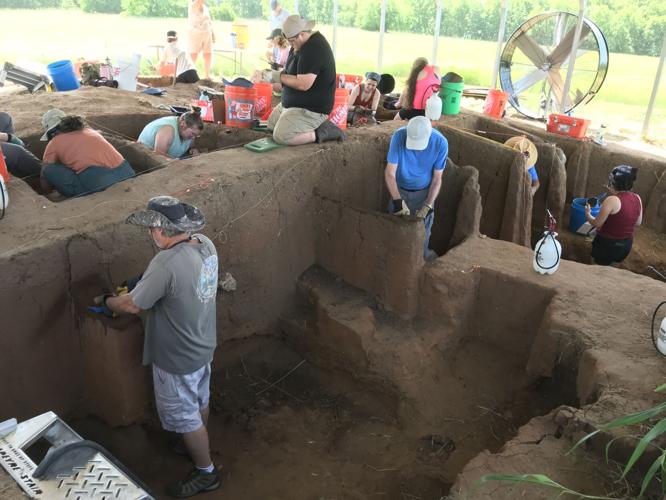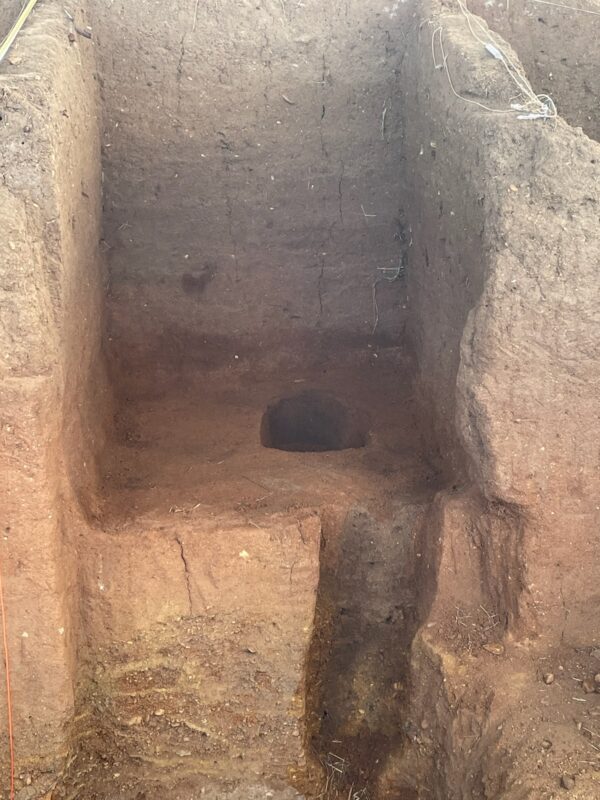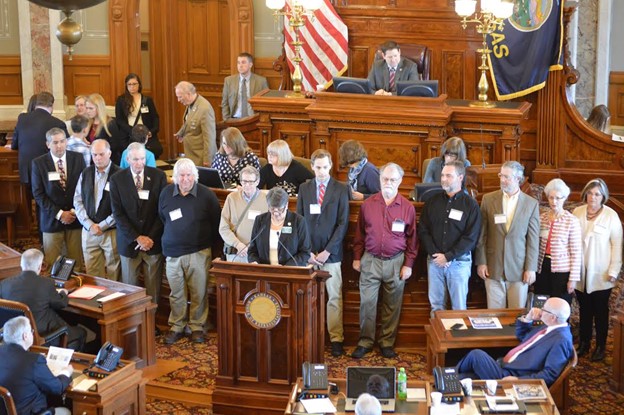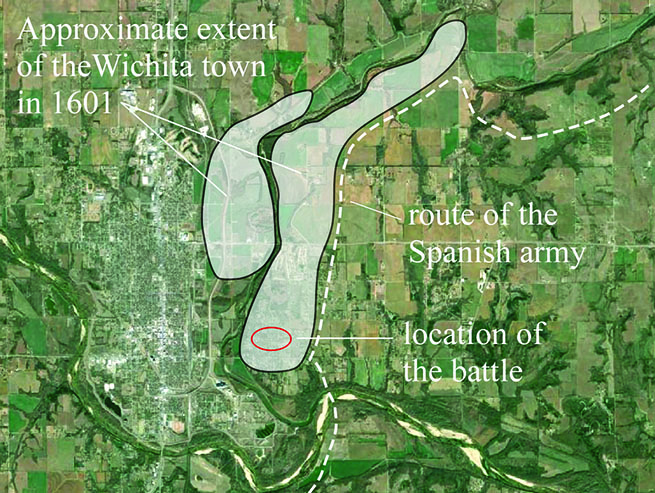Unfolding Story: Archeology field school to present new finds
By FOSS FARRAR CourierTraveler Correspondent
Original Article
https://www.ctnewsonline.com/news/article_67ca7cee-f40c-11ec-8b31-17c2c358e31a.html
Jun 25, 2022
A new chapter of the Etzanoa story may be unfolding.
Archaeology students this month have uncovered new clues indicating that the Etzanoa people’s encounter in 1601 with Spanish conquistador Juan de Oñate and his troops was not the last time they faced off with the Europeans.
Twenty college students working at an Arkansas City dig site under the direction of two Wichita State University archaeologists are expanding an excavation pit deeper and wider. This is the fifth year WSU has conducted field schools at the site.

The WSU archaeologists, Don Blakeslee and co-director of the field school Crystal Dozier will present a wrap-up of what was found during this month’s dig at 6 p.m. Wednesday in the Wright Room of Cowley College’s Brown Center. The presentation is free and open to the public.
A couple of weeks ago, the students uncovered three wood-post holes that — when added to three other post holes found in a previous year’s dig — indicate that an arbor existed at the site hundreds of years ago.

The evidence uncovered by students this month complicates the narrative of what happened at the site and when it happened, said Blakeslee, who is leading the field school for the fifth year.
“We have an arbor, a big oval structure with a thatched roof,” Blakeslee told area residents who visited the dig site recently. Existence of the post holes are indicated by a difference in soil color and texture where the posts were placed, compared with surrounding soil.
He said the biggest soil mold is six feet in diameter and six feet deep, and represents “rodent runs,” or a post hole disrupted by rodents rummaging through it to find scraps of food buried in food storage and trash pits.
“People lived here for 250 years at least,” Dozier said. “So what you get is a mixture of stuff.”
The ancestral Wichita occupied the lower Walnut River area from about 1300 to 1700, Dozier said.
Etzanoa was a large settlement of an estimated 20,000 ancestral Wichita that stretched at least five miles along the banks of the lower Walnut River, according to documented measurements taken by the Spanish explorers in 1601.
Student findings
That day, the field school students — working in 90-plus degree weather — were digging carefully in several deep rectangular pits. They were shaving down thin dirt walls that separated the pits, and were taking notes on what they found.
“We’re finding scrapers, stone punchers, knives,” Blakeslee said. “We’re getting broken and throw-away stuff.”
The students showed the dig site visitors what they had uncovered. The discoveries included intact arrow points uncovered by WSU students Angie Guevara, a senior, and Cecilia Zmudzinski, who is working on a master’s degree.
A partially intact arrow point about the size of a penny was shown by WSU senior Brandon Lasiter.
“We’ve found a couple of other ones, too,” he said. “They were used to hunt bison. The natives attached them at the end of an arrow and aimed them to hit the lungs or heart of a bison. They would be very accurate.”
Hannah Forker, a senior University of Kansas archaeology student from Haven, was digging down a wall between rectangular pits. She was carefully digging around a potential stone artifact uncovered in the wall. She made notes of the find.
Spanish artifacts
Evidence of an open-air shelter covered with a thatched roof, along with four Spanish artifacts found previously at the site, suggest a later Spanish encounter with the ancestral Wichita who lived at Etzanoa, Blakeslee said. It probably took place in the late 1600s after the Pueblo Revolt.
The artifacts found last year included a small piece of glass not flattened on one side that experts have identified as an item manufactured in 17th century Europe, probably a part of a fancy glass goblet.
Other Spanish artifacts found at the dig site in previous years include a horseshoe nail, a rusted fragment of metal, and a button.
“The horseshoe nail maybe was from Oñate’s visit, but you add to that the button, piece of glass — they weren’t there long enough for all those things to be left behind,” Blakeslee said.
He noted that Oñate and his men were only at Etzanoa for about three days.


